My favorite thing about living in Santa Cruz this year has been my proximity to the ocean. From my apartment, I can hear the sea lions barking at the wharf, and waves crashing at the beach. True, I also have to deal with the rhythmic screaming of rollercoaster riders at the Boardwalk, but it’s worth it.

Another day in paradise? It takes more than a little fecal indicator bacteria to stop people from surfing at Cowell’s.
Recently, my sister and I went surfing at Cowell’s Beach, famous for its smooth break and welcoming vibe for beginners. And we weren’t alone. Dozens of surfers — mostly beginners taking lessons — crowded into “party waves,” sometimes close enough to hold onto each other. Even though I suffered my fair share of wipeouts and swallowed a few mouthfuls of seawater, I felt invigorated in my connection with the ocean.
That is, until I learned what many have known for years: Cowell’s Beach is one of the most poo-polluted beaches in the state of California. The levels of fecal indicator bacteria found at the beach have earned it the distinction of multiple failing grades from Heal the Bay, a nonprofit organization that keeps tabs on coastal water quality. Last year, Cowell’s ranked No. 2 on the organization’s “Beach Bummer List,” which includes the top 10 most polluted beaches in the state. It was the only beach in the greater Bay Area region to make that list.
So where is all of the pollution coming from? It turns out the answer isn’t so simple. There are many possible culprits — ranging from seabird droppings to rotting kelp to leaky sewer pipes to stagnant lagoon water. Tracking down the main source of the contamination has stumped the city for years, but now a team of water quality experts from Stanford University is hot on the scent.
The main goals of the Coastal Water Quality Research Group, led by Alexandria Boehm at Stanford University, are to root out the sources of coastal contamination and gain a greater understanding of their ecology. The effort to hunt down sources of contamination at Cowell’s Beach is part of a larger statewide project with collaborators at UC Santa Barbara, UCLA, and the Southern California Coastal Water Research Group.
Rather than looking for pathogens directly, the researchers measure fecal indicator bacteria (FIB) instead. E. coli and enterococcus — two bacterial species that inhabit the human and animal gut — are prime indicators of fecal contamination. In past studies, finding high levels of these bacteria was a predictor of impending beachgoer illnesses. Complaints can range from rashes and diarrhea to eye or ear infections.
“Most of these studies had a clear fecal source, and then these were very good indicators,” said PhD student Todd Russell, who heads the Cowell’s microbial sleuthing operation. “It’s more complicated when you don’t necessarily have a clear human source.”
At Cowell’s, the sources of contamination seem limitless. Water from Neary Lagoon, a refuge for a multitude of waterfowl, flows directly into the ocean at Cowell’s through a pipe in the winter, but during the summer the pipe is covered with sand, so lagoon water stagnates and could seep through the sand into the ocean.
Recently, city officials discovered what some have dubbed a “stinking gun,” in which the sewage from one household was dumping directly into the pipeline carrying Neary Lagoon’s water to the beach. That problem has since been resolved.

Sea lions hanging out at the wharf, adjacent to Cowell’s Beach could be contributing their fair share of bacteria as well.
And then there are the many animals that call Santa Cruz beaches their stomping grounds — seabirds, marine mammals, and dogs, to name a few. Like humans, they also poop. Russell’s team is conducting DNA testing of samples from Cowell’s and nearby inlets, to determine which species are making the biggest donations of feces.
“Then the other possibility is that there may be bacterial populations that live on beach sands,” Russell said. While it’s unclear whether bacteria that live in the sand were originally seeded by fecal contamination, it’s possible that beach sand bacteria are a contributing factor to Cowell’s pollution. Russell’s team is testing this possibility by analyzing the bacteria in Cowell’s sand.
And last, but not least, “wrack” — consisting of sea plants like kelp that wash ashore — is a possible culprit. Like the sand, kelp might not be the original source of the bacteria, but instead serves as a warm incubator that could amplify microbes from fecal sources. The Stanford team is conducting analyses on wrack to determine if this is a possible source for contamination.
The team is in the final stages of their analyses on Cowell’s sand, surf, and surrounding inlets, so won’t yet say definitively whether they’ve identified a singular source of the contamination. Most likely, the contamination comes not just from one source, but from an unfortunate combination of many.
For now, the microbes in the water are little deterrent for the reveling surfers catching party waves at Cowell’s. Even the study’s lead author, who knows first hand about Cowell’s fecal foliage, admits he’s taken a dip. “I’ve been in the water plenty there,” Russell said. “And I will say that’s part of what motivates this whole study — it’s one of the most heavily used beaches in Central California.”

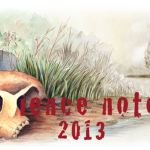

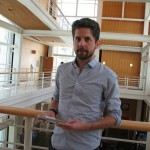
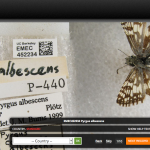
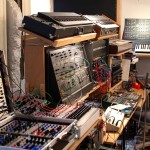
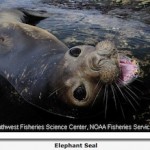
I had read somewhere that whatever the source of the contamination of Cowell beach, what exasperates the problem is the lack of current in the cove. The shape of the beach and bluff mean that the water there just tends to sit there, instead of getting cycled – and filtered – out to deeper water.
Is there any truth to this?